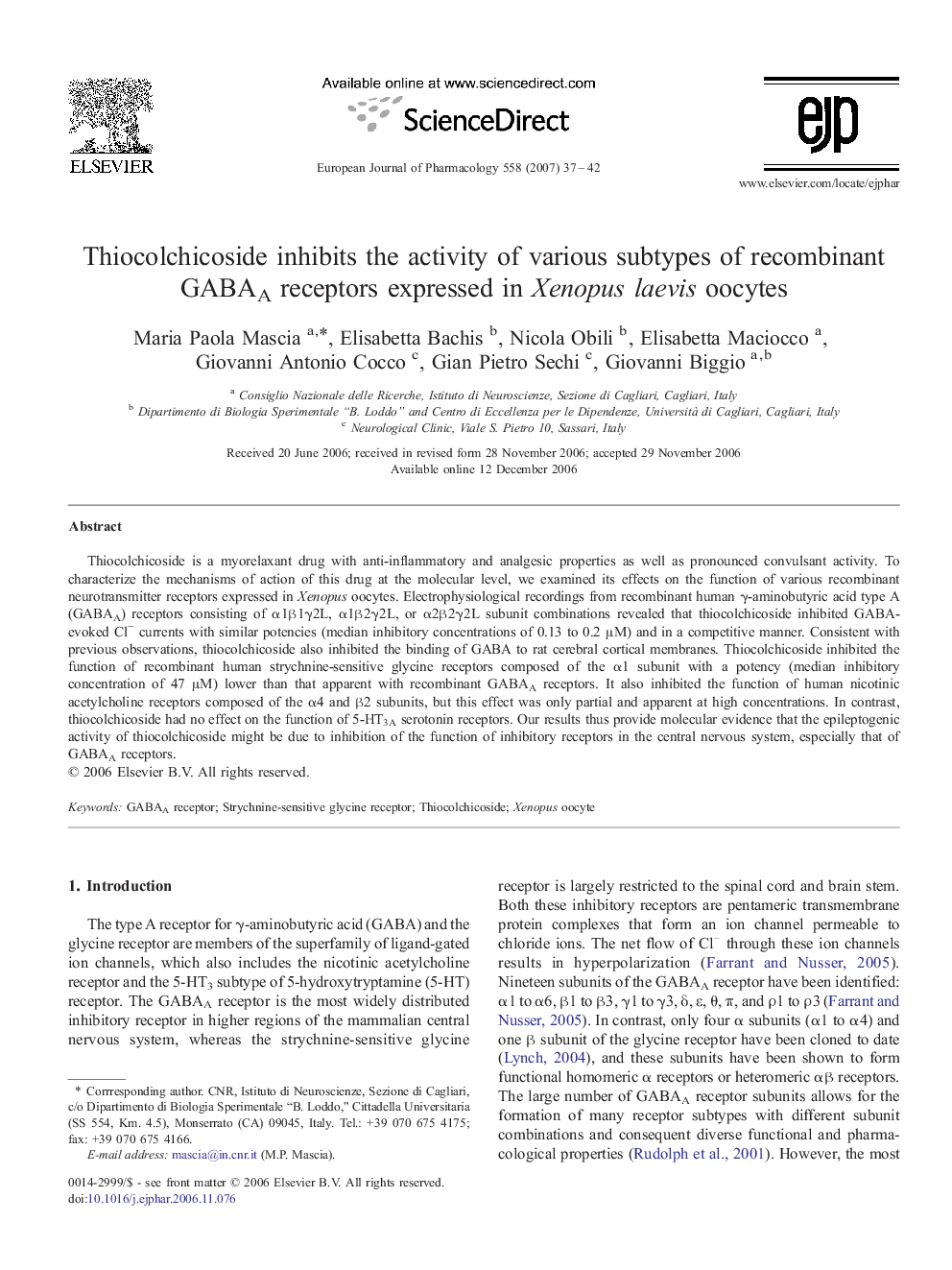| Article ID | Journal | Published Year | Pages | File Type |
|---|---|---|---|---|
| 2536476 | European Journal of Pharmacology | 2007 | 6 Pages |
Thiocolchicoside is a myorelaxant drug with anti-inflammatory and analgesic properties as well as pronounced convulsant activity. To characterize the mechanisms of action of this drug at the molecular level, we examined its effects on the function of various recombinant neurotransmitter receptors expressed in Xenopus oocytes. Electrophysiological recordings from recombinant human γ-aminobutyric acid type A (GABAA) receptors consisting of α1β1γ2L, α1β2γ2L, or α2β2γ2L subunit combinations revealed that thiocolchicoside inhibited GABA-evoked Cl− currents with similar potencies (median inhibitory concentrations of 0.13 to 0.2 μM) and in a competitive manner. Consistent with previous observations, thiocolchicoside also inhibited the binding of GABA to rat cerebral cortical membranes. Thiocolchicoside inhibited the function of recombinant human strychnine-sensitive glycine receptors composed of the α1 subunit with a potency (median inhibitory concentration of 47 μM) lower than that apparent with recombinant GABAA receptors. It also inhibited the function of human nicotinic acetylcholine receptors composed of the α4 and β2 subunits, but this effect was only partial and apparent at high concentrations. In contrast, thiocolchicoside had no effect on the function of 5-HT3A serotonin receptors. Our results thus provide molecular evidence that the epileptogenic activity of thiocolchicoside might be due to inhibition of the function of inhibitory receptors in the central nervous system, especially that of GABAA receptors.
